The word “management” doesn’t always have a positive connotation. But try getting anything done in a fast-paced work environment without applying the four functions of management.
No matter what type of work you do, having a clear understanding of the management levels and the four functions of management will help you do that work more efficiently. It’s all about adapting to whatever work environment you’re in and making it perform better. Let’s learn more about the four functions of management.
What Is Management?
Management is a word that’s thrown around a lot, but do people really know what the definition of management is? Management is about coordinating and administering work that will achieve a goal. To do this requires strategizing and resources. Management is also used in business to describe the organization of a company’s staff.
Managers are the people who implement management. This requires a myriad of skills to do so effectively. Some of those skills include planning, communication, organization and leadership. In addition, an effective manager will understand the company’s goals and be able to use employees to achieve those goals.
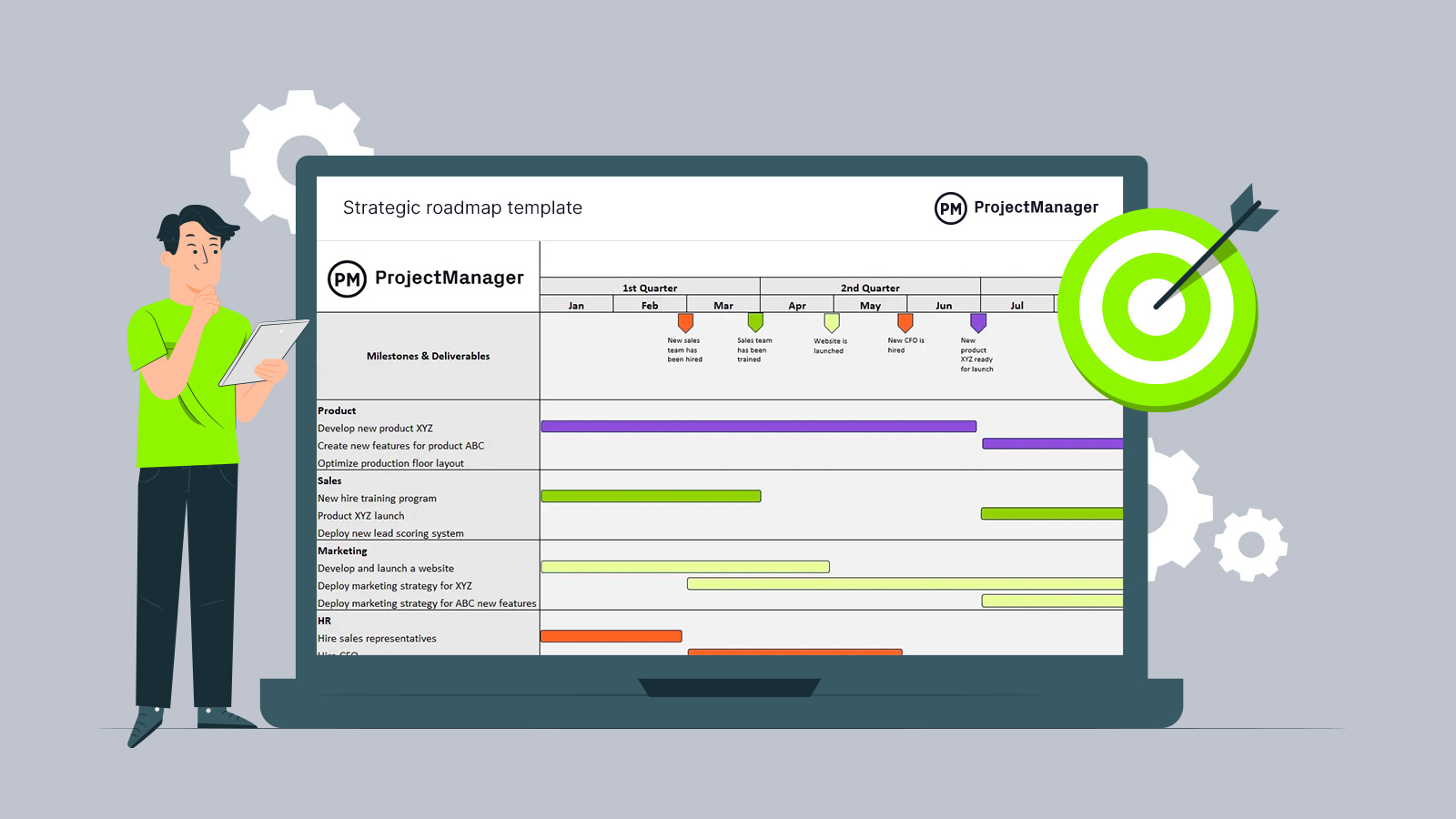
Get your free
Strategic Roadmap Template
Use this free Strategic Roadmap Template for Excel to manage your projects better.
Management Levels
Management is organized in a hierarchical fashion. There are always people to whom managers report. This management level is made up of three main tiers: top management, middle management and lower or operational management.
Top Level Management
These are the top of the management chain. These managers are CEOs, presidents, vice presidents and board members. They set the goals for the organization and its course, as well as develop strategies, policies and make decisions that impact the direction of the organization. Therefore, they’re accountable to shareholders and stakeholders if these initiatives are successful.
Middle-Level Management
The next layer of management is middle management. They’re in charge of the tactical planning of the organization, report to the top management and are made up of department managers, regional managers and branch managers. Their responsibilities include communicating the strategic goals of top management. They’re more involved in directional and organizational functions than top management and provide guidance for lower management.
Lower or Operational Management
Lower or operational management is the front-line team leaders, foreman, section leads and supervisors. Their responsibilities include overseeing the daily work of employees, staff or team members and providing direction. They make sure quality standards are upheld, deal with interpersonal conflict and offer feedback on performance.
ProjectManager is project management software that can be used for business management at any level. Use Gantt charts, kanban boards, dashboards and timesheets to keep track of the daily performance of your employees and guide them toward success. Our kanban boards are ideal to manage your workflows no matter what industry you’re in. Get started today for free.
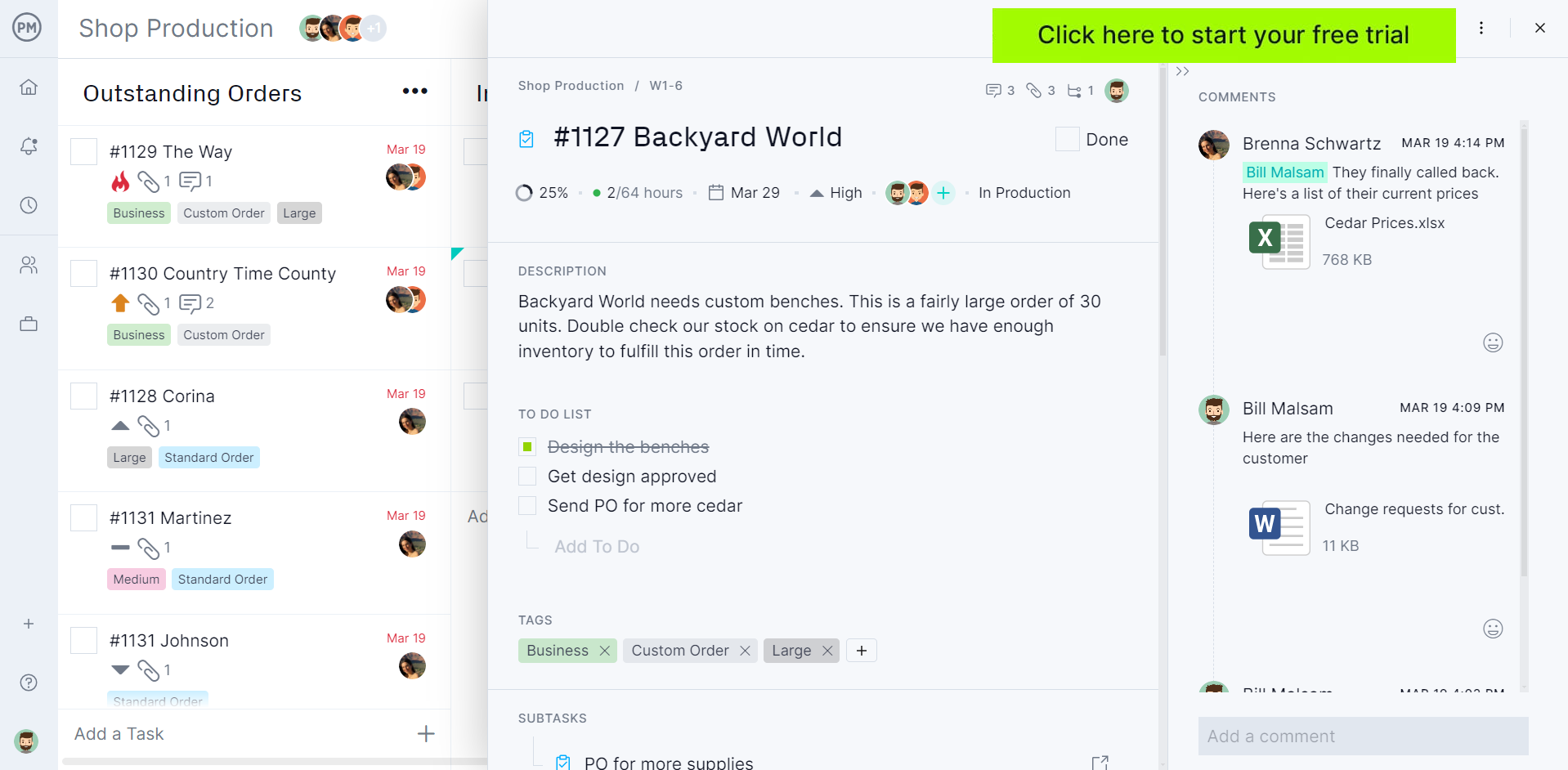
What Does a Manager Do?
Managers are responsible for five basic duties. As noted, they’ll set up objectives for the organization, employees, team members, etc. This is necessary because it maintains the success of the organization. This involves leadership qualities that motivate staff.
Managers also organize. They look at the work that must be done and break it into smaller, more manageable tasks. They must know the organizational structure of the organization and the relationship between departments.
As we mentioned, managers must be strong leaders. They must motivate those under them to deliver on the goals and objectives of the organization. This involves soft skills such as knowing how to interact and respond to a variety of personality types to get them to work together on a common goal.
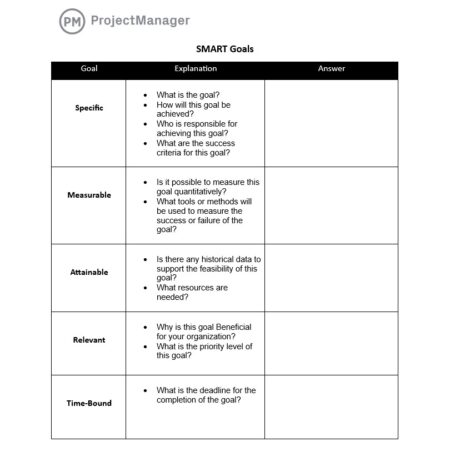
Employees are the most valuable resource in an organization and it’s management’s job to cultivate and develop them. Investing in staff is critical to achieving the strategic goals of the organization, which, after all, is a manager’s main responsibility.
But managers must also evaluate those working under them. This means creating metrics by which to measure an employee’s performance. This allows managers to develop employees while addressing shortcomings and how to improve them through training and other means.
What Are the Four Functions of Management?
The four functions of management are planning, organizing, leading and controlling. Successful managers must do all four while managing their work and team. These are foundational to any professional managerial position. Plus, there are other skills and specialized knowledge related specifically to the job you manage.
The concept of how management should interact with personnel was first codified by Henri Fayol, a French mining engineer. He developed a general theory of business administration and management functions, which developed into the four functions of management.
Without these four pillars of management supporting other responsibilities, nothing will get done on time and within budget. If you’re managing yourself or teams, you need to understand these fundamentals of management, which are the basis of management skills.
Of course, the four functions of management are theoretical. When you’re ready to put them into practice, you’ll need project management tools that let you connect with your coworkers and teams wherever they’re working. It’s part of the core responsibilities of a manager, no matter what your organizational structure is.
Function 1: Planning
The first function of management is planning: you can’t manage your work until you have a planning process. This means understanding your goals and objectives, which is the start of strategic planning. Having a strategic or tactical plan is how you get from point A to point B.
Of course, tactical planning is more than getting from one place to another. There’s operational planning, which involves identifying and assigning resources, both in terms of personnel and materials. That means assembling a team and being able to allocate resources, such as the equipment they need to execute the work.
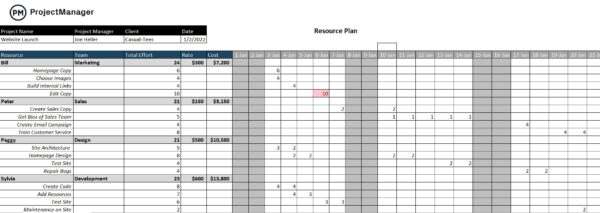
There’s also organizing your tasks, prioritizing them and giving each a deadline and duration. The plan includes adding tasks to a timeline to schedule your work. Then, you have to stay updated on your team’s progress and performance and adjust your plan if they aren’t meeting benchmarks.
Communication is a key element of planning. Managers must clearly communicate the plan to their team for them to properly execute the work. But they must also communicate with stakeholders and keep them updated on the progress of the work that they’re invested in.
This free strategic planning template can help you with the planning aspect of management. It helps you make a plan, organize your departmental objectives and stay on track towards your goals. Get yours for free today.

Function 2: Organizing
Organization falls on every aspect of a manager’s responsibility. You can’t manage teams successfully without having some kind of organization. When you prioritize tasks in planning, you keep your organization in detail.
In terms of the larger picture when it comes to organization, a manager is responsible for ensuring their company, department or project is running smoothly. This is done by creating internal processes and structures, as well as understanding your team or employees so you can place them where they’re best suited. Managers have to keep their work organized and manage the operation of their department and the people therein.
That doesn’t mean a manager is only delegating tasks and making sure those working under them have the resources they need. They must keep an eye on the processes and structures they employ and adjust them as needed to ensure they’re working efficiently and keeping everyone productive. This organizing function is critical, which is why it’s one of the essential functions of management.

Function 3: Leading
Leading is about having the skills, communication aptitude and ability to motivate those you manage. Leadership is a critical role for anyone in management, which is why it’s one of the four functions of management. If you can’t lead, regardless of your leadership style, you won’t be a successful manager. It’s about building trust with your team.
Leadership skills include conflict resolution. When managing a diverse group, there will be conflicts that can delay tasks and cost your organization money. The better you are at identifying and resolving these conflicts, the better your management is.
Leadership styles vary, but they share giving their teams a strong sense of direction when defining goals and objectives. This is regardless of if they’re assigning regular work or introducing a new process to the team.
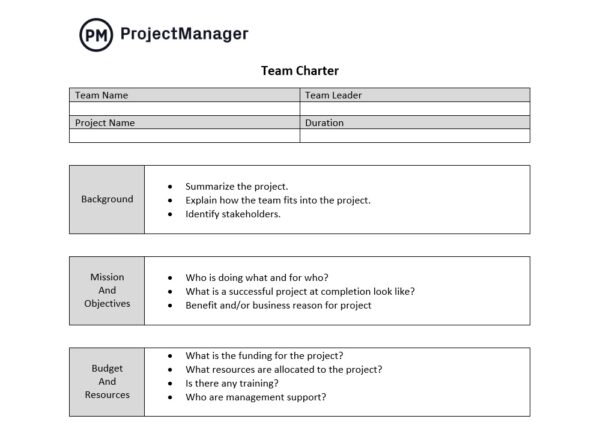
Because leadership can be expressed in myriad ways, managers of all types can find themselves cast as leaders. Some are more top-down authoritarians; they employ autocratic leadership. Conversely, there are bottom-up managers who seek collaboration from everyone and encourage employees to participate in the process.
Whatever leadership style you have, or a combination of leadership styles, it can be applied to the way you manage your team members. Even the most hands-off leaders motivate and drive their teams to successful ends. There’s no one way to do this, but the basic functions of a strong leader in management are understanding employees and what takes to get the best out of them.
Function 4: Controlling
The controlling function involves monitoring and tracking progress and performance to help make decisions in a work environment. You can plan, organize and lead to your heart’s content, but if you’re not monitoring the quality of work, you’re in trouble. If you need help with the controlling process, try our free dashboard template.
Beyond progress, performance and quality, the controlling process also includes how efficiently they’re doing their jobs and how reliable they are when taking on their tasks. Another term for this is control management and quality management. It’s a part of any decision-making process. You can’t make an insightful choice without data to support it.

The purpose of controlling in management isn’t to dominate your workers but to make sure they’re meeting the goals and objectives of the business. Some managers prefer to chart out the entire workflow of their teams while others allow their workers to be self-directed.
These are two sides of the same coin: delivering quality, on time and within the budget projects. Controlling is the most important aspect of the four management functions. It’s about meeting your financial goals and should be at the forefront of your management team.
Alternative Modesl of the Four Functions of Management
While the traditional four functions of management provide a foundational framework for understanding managerial roles, several other models have emerged that offer different perspectives on management. Let’s look at some of them.
Five Functions of Management by Henri Fayol
Henri Fayol was a pioneer in management theory. He outlined five primary functions of management. They include planning, organizing, commanding or leadership, coordinating and controlling. These set objectives, arrange resources to implement the plan, motivate employees, ensure that different departments work together effectively and monitor and evaluate performance.
Five Functions of Management by Harold Koontz and Cyril O’Donnell
Harold Koontz and Cyril O’Donnell expanded on management theory by proposing a comprehensive framework of the five functions of management. Their model emphasizes the processes involved in managing an organization effectively. These five functions are planning, organizing resources and tasks, staffing, directing or leading to motivate employees and controlling, which is the process of monitoring performance and adjusting as needed.
Seven Functions of Management or POSDCORB by Luther Gulick
Luther Gulick introduced the acronym POSDCORB to represent the seven essential functions of management. This framework emphasizes the various roles that managers must undertake to effectively run an organization. These seven functions are planning, organizing, staffing, directing or leading, coordinating different departments, reporting on organizational performance and budgeting to manage financial resources.
Eight Functions of Management by George R. Terry
George R. Terry expanded on traditional management functions by identifying eight of them. His model provides a detailed framework for understanding the various roles that managers play within an organization. They are: planning, organizing, staffing, directing, controlling, coordinating, reporting and budgeting.
Seven Functions of Management by Ralph C. Davis
Ralph C. Davis outlines a model of seven functions of management that focus on the core responsibilities managers hold within an organization. They include planning, organizing, staffing, directing, controlling, coordinating and reporting. However, they highlight the essential roles managers play in guiding organizations and emphasize the importance of effective planning, organizing, leading and controlling within any organization.
Functions of Management vs. Features of Management
Functions of management and features of management refer to different aspects of the management process. Functions of management are the specific tasks and activities that managers perform to achieve organizational goals. While features of management are the inherent characteristics or qualities that define the management process.
For example, functions of management are planning, organizing, leading and controlling, which create a framework for understanding managerial roles. Features of management, on the other hand, are goal-oriented, dynamic, continuous and universal to provide insight into the nature and effectiveness of management.
How ProjectManager Helps With the Four Functions of Management
ProjectManager is an online tool that gives managers the tools they need to plan, organize, lead and control their teams, whether they’re under the same roof, distributed across time zones or in different departments. ProjectManager’s features give you real-time data to make more insightful decisions, work more productively and deliver success.
Easily Create Robust Project Plans
Making a successful plan means organizing tasks, linking dependencies and setting milestones. One of ProjectManager’s multiple project views is an interactive Gantt chart that does that and much more. You can easily filter for the critical path instead of taking time with complicated calculations. Then, set the baseline. Now, you’ve captured the plan to compare it to your actual effort once you start working.
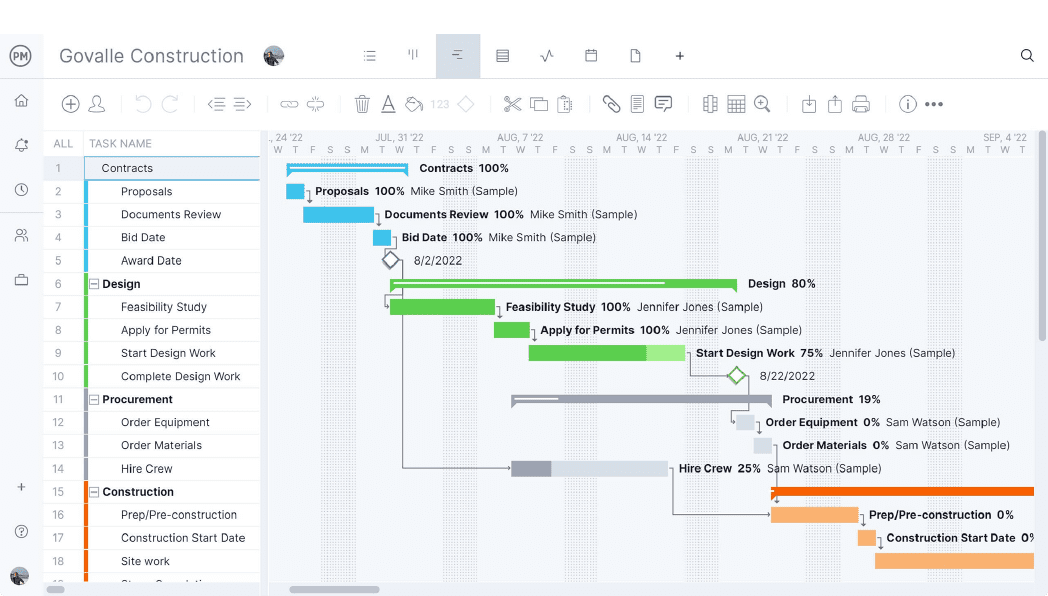
Monitor Your Team’s Progress in Real-Time and Improve the Organization
You can’t control your team if you’re not monitoring them. You don’t want to get in their way, though, which is why ProjectManager’s real-time dashboard automatically collects data and calculates that information into easy-to-read graphs and charts on workload, time, cost and more. It’s like getting an instant status report whenever you want.
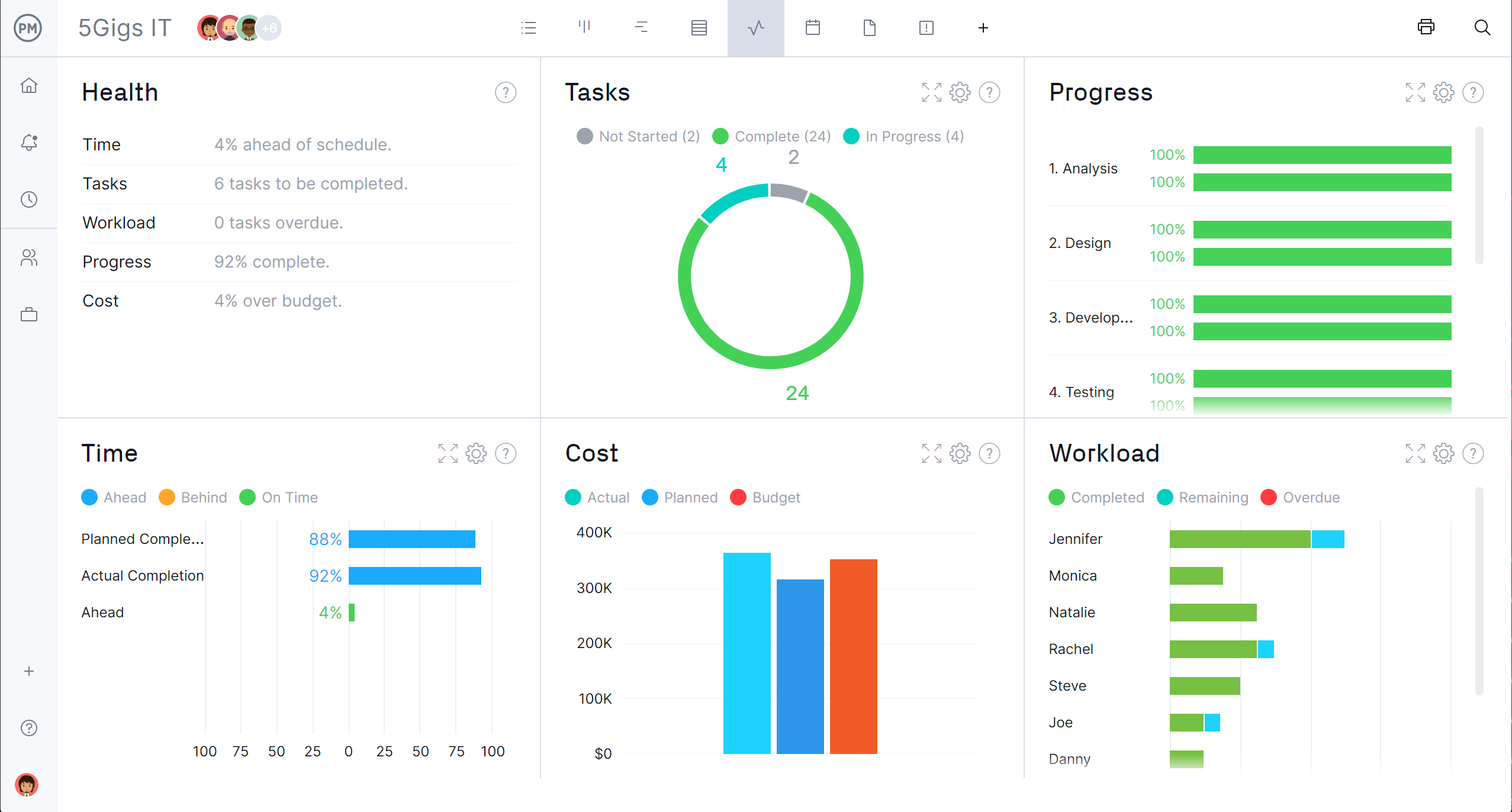
Generate Reports for Shareholders and Enhance the Controlling Function
To drill down deeper into the data use, ProjectManager’s one-click reports, which you can filter to focus only on the information you want to see. ProjectManager has a report on timesheets to see how long teams are taking on their tasks, project variance to capture the planned versus actual effort and even portfolio status reports if you’re managing more than one project. Reports can then be shared with stakeholders to keep them updated. This has obvious applications to the four functions of management.
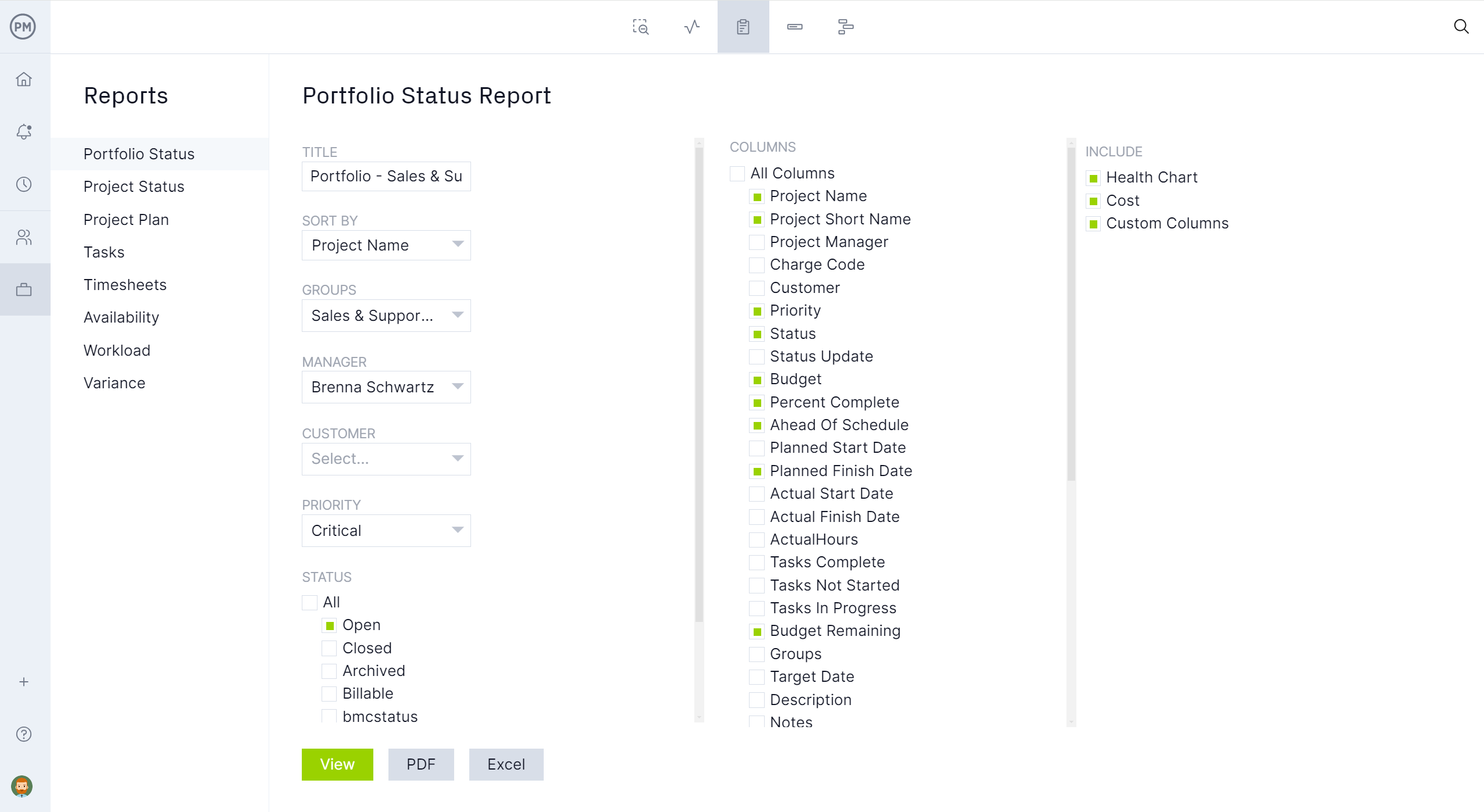
ProjectManager is award-winning software that helps manage teams, no matter where they are or how they work. Our tool connects teams to help them work better while giving managers the transparency they need to lead and deliver results for their stakeholders. Get started today for free and join the 35,000-plus professionals using ProjectManager.

